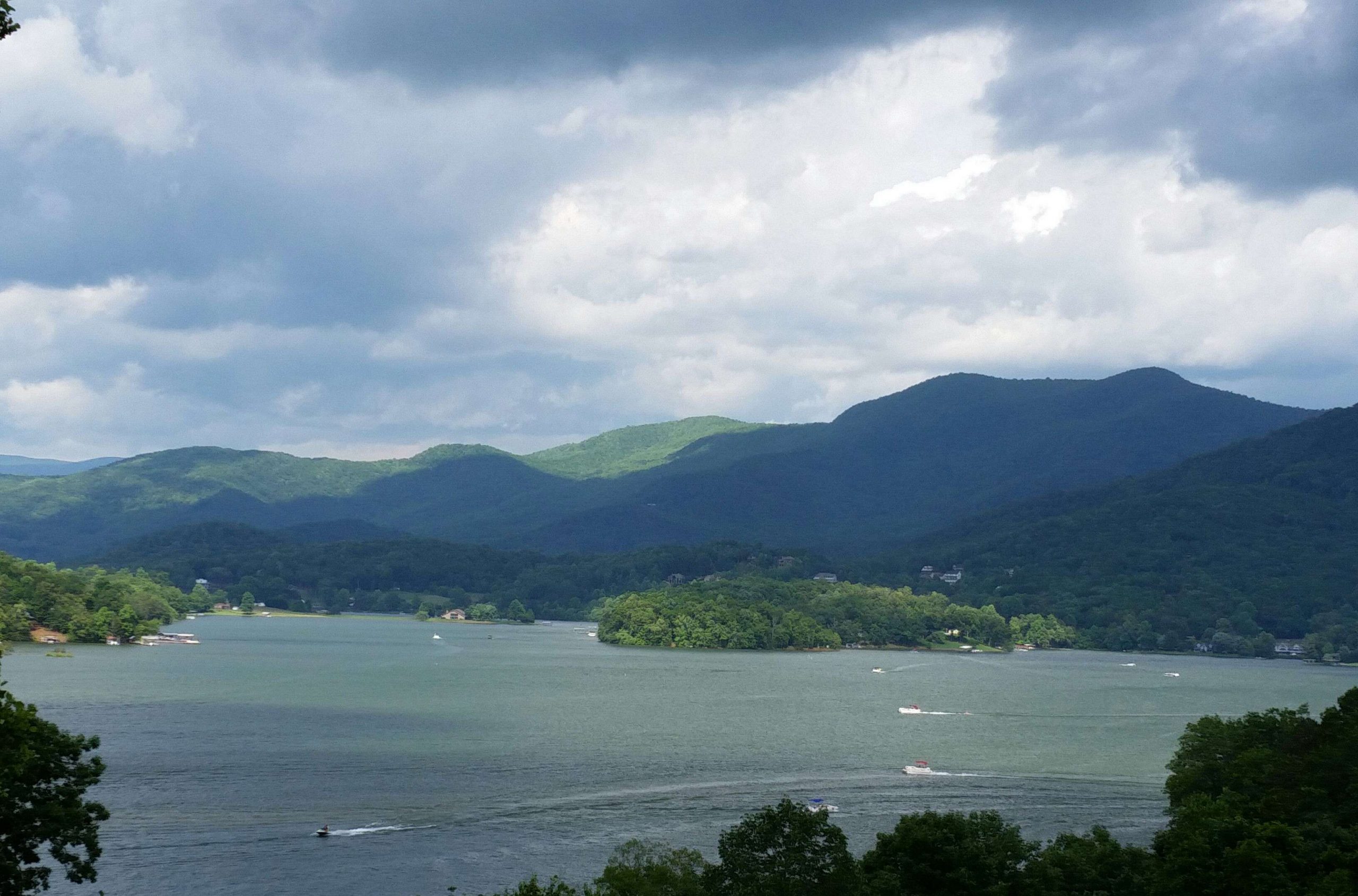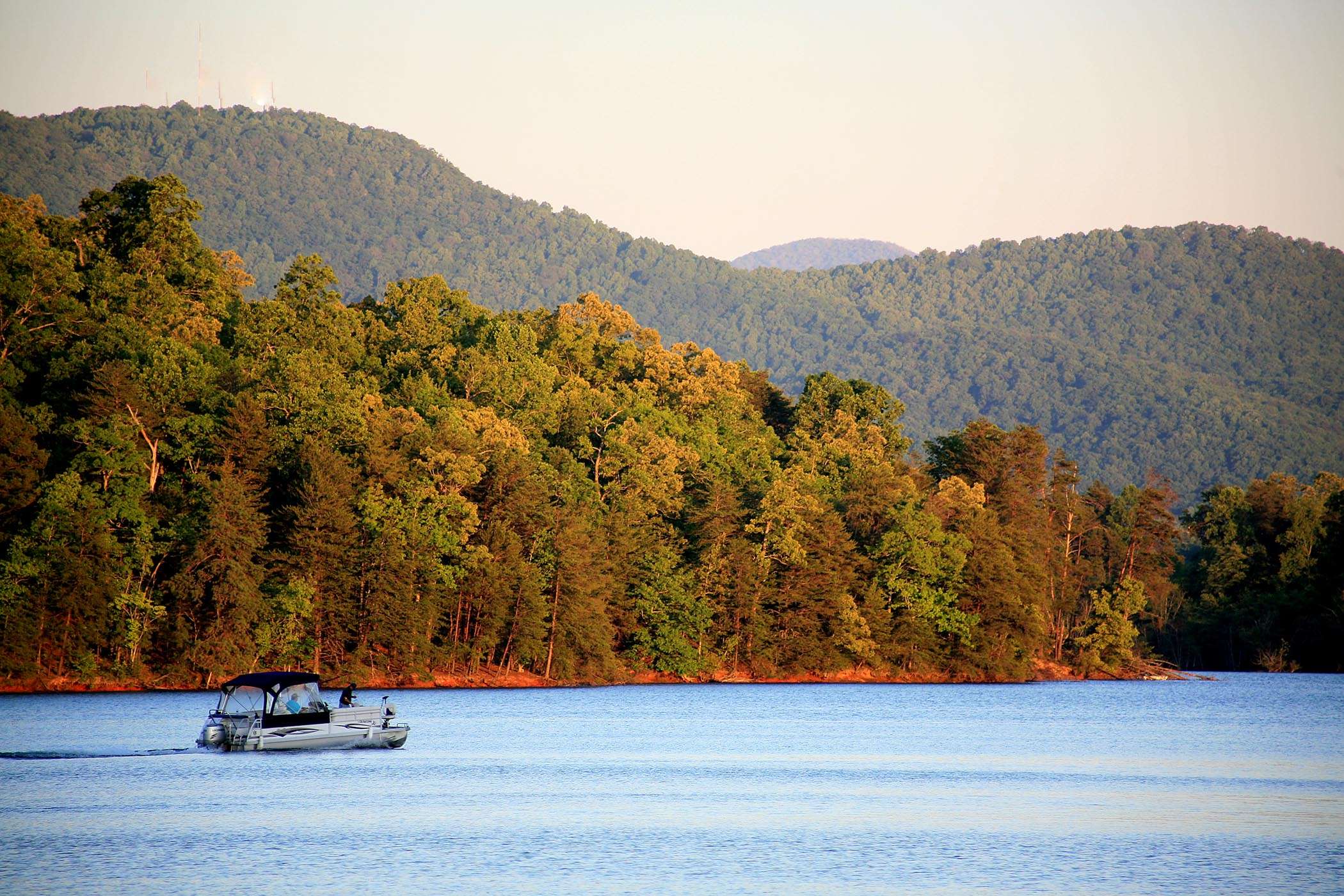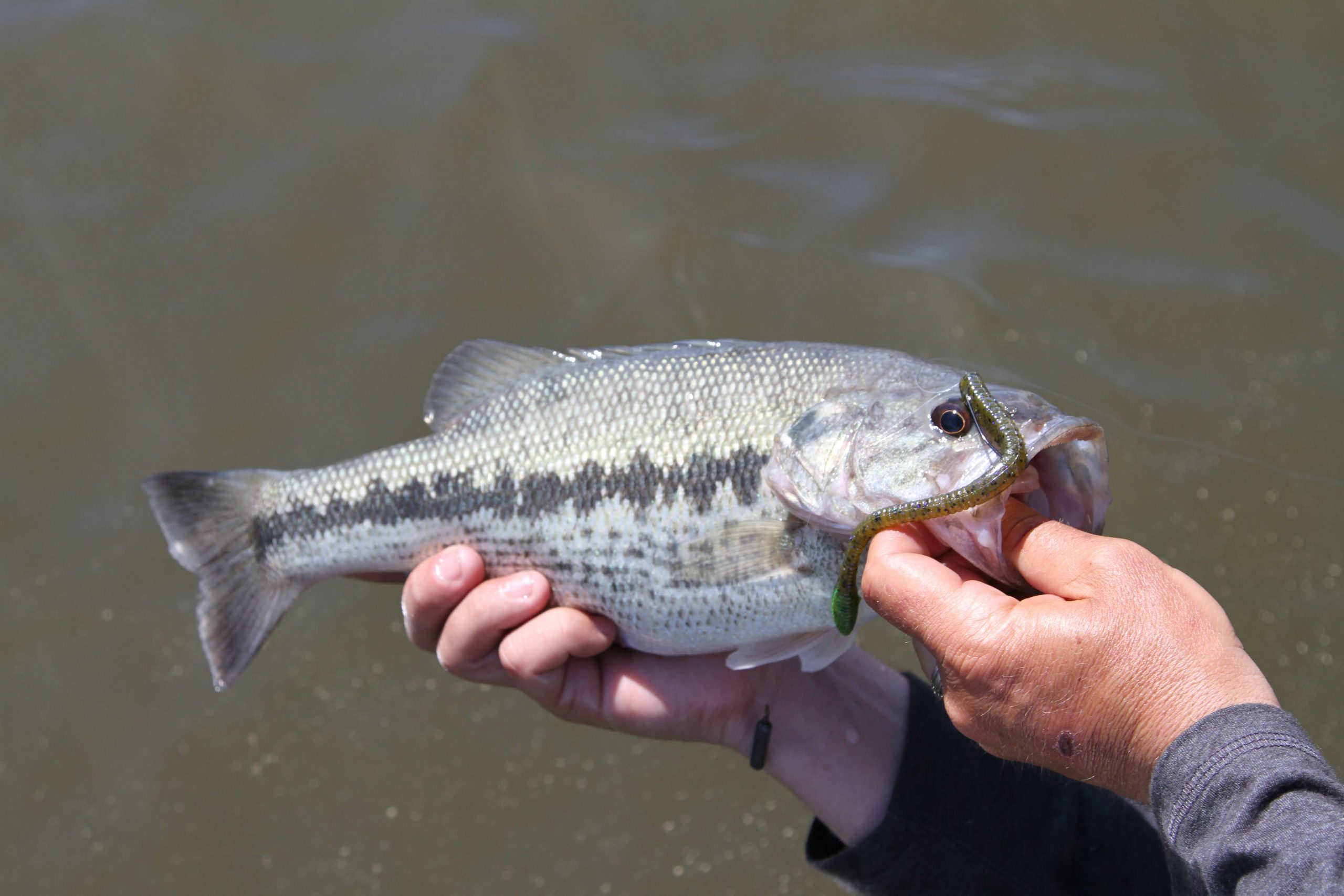
Its storyline dates back to the World War II era, and a field of 50 anglers will do battle with Lake Chatuge’s spotted and largemouth bass during the Toyota Bassmaster Angler of the Year Championship on this Hiawassee River reservoir Sept. 20-23.
The Hiawassee’s hydroelectric potential piqued the interest of private entities since the early 1900s, but the conversation gained traction when the Tennessee Valley Authority took over the region’s flood control operation in the 1930s. Responding to the war-heightened demand for electricity, largely to power East Tennessee’s aluminum production, the TVA proposed several dams on the Hiawassee and other Tennessee River tributaries.
Originally called the Hayesville project, the Chatuge Dam project was authorized on July 16, 1941, with work beginning the next day.
Specs and stuff
By the numbers, Lake Chatuge encompasses 10.9 square miles in northern Georgia and southern North Carolina. As the uppermost of three Hiawassee River reservoirs, Chatuge was initially impounded to hold water that could be released as needed to boost the power generation of the downstream Hiawassee Dam, but the 1954 addition of a small generator creates hydroelectric output.
Situated just north of the North Carolina-Georgia border, the Chatuge Dam comprises impervious earthen fill (earth and rock with a strengthening core made from a soil-cement mixture) fortified by riprap. Standing 144 feet high and 3,336 feet long (including the concrete spillway), with a flood storage capacity of 62,619 acre feet, Chatuge Dam was completed on Feb. 12, 1942, at a cost of a little over $9 million.
With a maximum depth of 144 feet, and an average of 30, Lake Chatuge has been hovering right around the 1,922.73-foot level in recent weeks.

Fishing forecast
AOY Championship competitor Jake Whitaker lives about 2 hours from the lake and fishes its waters several times a year. He says spots and largemouth will both play, but the probability game will merit consideration.
“You can win on either one, but the spots will be the more consistent bite just because of the numbers,” Whitaker said. “There’s a ton of spots in that lake, and they do get big. But there are also giant largemouth in there.
“If a guy can get five of those keeper largemouth in a day, he’s going to do really well. But getting five keeper largemouth in a day’s time is not an easy task. So, a mixed bag will probably be how it goes.”
How big is “big?” Whitaker says the spots average 1 to 1 1/2 pounds with 4- to 5-pounders not uncommon. Chatuge holds plenty of 2- to 3-pound largemouth, but 8s and 9s do happen.
Considering how warm the weather has remained, Whitaker’s looking for mostly an offshore tournament with the entire lake in play. A cool spell or a good rain could move some fish up shallow, but the deeper humps, ledges and brush piles should dominate the show. That’s not to say Chatuge’s docks and laydowns won’t offer shallow opportunities, but the offshore stuff will present the target-rich opportunities.
Mornings will likely see some schooling activity, but the fish will settle into deeper water. Whitaker suggests topwaters early for limits, with big-bite potential, then dropshots and shaky heads for the deeper structure. Those that stay shallow for the largemouth will likely find success by skipping docks and flipping shallow wood.
Like many lakes in this region, Chatuge is home to schools of blueback herring; those hyperactive gypsies upon which spotted bass chow. A good rally of schooling spots can make someone’s day in a hurry, but spending a lot of time chasing these moments is a fool’s errand and a serious time killer.
Savvy anglers will keep a walking topwater and a pencil popper handy for targets of opportunity, but if the tournament sees cloudy, dim conditions, the surface game could last all day, regardless of the blueback influence.
“If a school of herring comes by a brush pile, you’re going to get some schooling activity,” Whitaker said. “But that’s not necessarily what the fish always feed on. The lake also has a lot of shad and bream.
“You could go catch fish on five different lures; it could be a lot of junk fishing. Catching keepers shouldn’t be a problem, but getting those big bites is what will be more challenging.”

Did you know?
- Chatuge Dam was named for an 18th-Century Cherokee village that once stood near its site.
- Chatuge Dam was added to the National Register of Historic Places in 2017.
- Tournament host city Hiawassee is the only incorporated municipality in Towns County. Incorporated on May 17, 1956, it serves as the county seat.
- The name “Hiawassee” comes from the Cherokee word Ayuhwasi, which means “meadow.”
- Hiawassee is an Appalachian Trail Community and a recognized Tree City USA by the Arbor Day Foundation.
- Hiawassee River is known as “the hidden jewel of trout fishing.”
Local looks
Pleasantly removed from big city bustle, Lake Chatuge sits nestled among some of the southeast’s most beautiful scenery. The Nantahala National Forest surrounds the dam and the lake’s North Carolina section, while the Chattahoochee National Forest embraces the Georgia section.
Local attractions/points of interest include:
Brasstown Bald — Southwest of Lake Chatuge, Georgia’s highest peak (elevation 4,784 feet above sea level) offers stunning views, especially during the fall foliage eruption. Located amid the Chattahoochee-Oconee National Forest, Brasstown Bald features a museum interactive cultural and natural history exhibits and a cloud level observation deck with 360-degree views of the Southern Appalachian Mountains.
High Shoals Falls — Located in Blairsville, southwest of the lake, five waterfalls with a total vertical drop of 300 feet highlight this 170-acre scenic area, which also includes the 1.2-mile High Shoals Trail with observation decks near two of the cascading streams.
Hamilton Gardens at Lake Chatuge — Botanical brilliance abounds with more than 3,000 azaleas and rhododendrons, which inspire local artists whose works are displayed at the near by Artworks Artisan Center. Located next to Lake Chatuge Lodge north of Route 76.
Chatuge Dam and Recreation Area — Located on the lake’s northwest corner in Hayesville, N.C., the site offers jogging/walking routes with stunning vistas.
Alpine Helen — About 30 minutes south of Lake Chatuge, visitors find the recreation of a Bavarian Alpine village complete with cobblestone streets and specialty and imports shops ranging from candle making and glass blowing to European cuckoo clocks. Dining options include traditional German to southern favorites, such as “Georgia Ice Cream” (aka “grits”).
Blue Ridge Railroad — Drive 40 minutes west of Hiawassee and you’ll find an historic depot (1905) in downtown Blue Ridge, Ga., within the lush Chattahoochee National Forest. Ride in vintage, climate-controlled or open-air rail cars to view the magnificent scenery. The 26-mile round trip (4 hours ) follows the Toccoa River and visits McCaysville, Georgia and Copperhill, Tennessee. (Fall foliage is a popular period, so book early.)
For more on the area, visit www.exploregeorgia.org.

